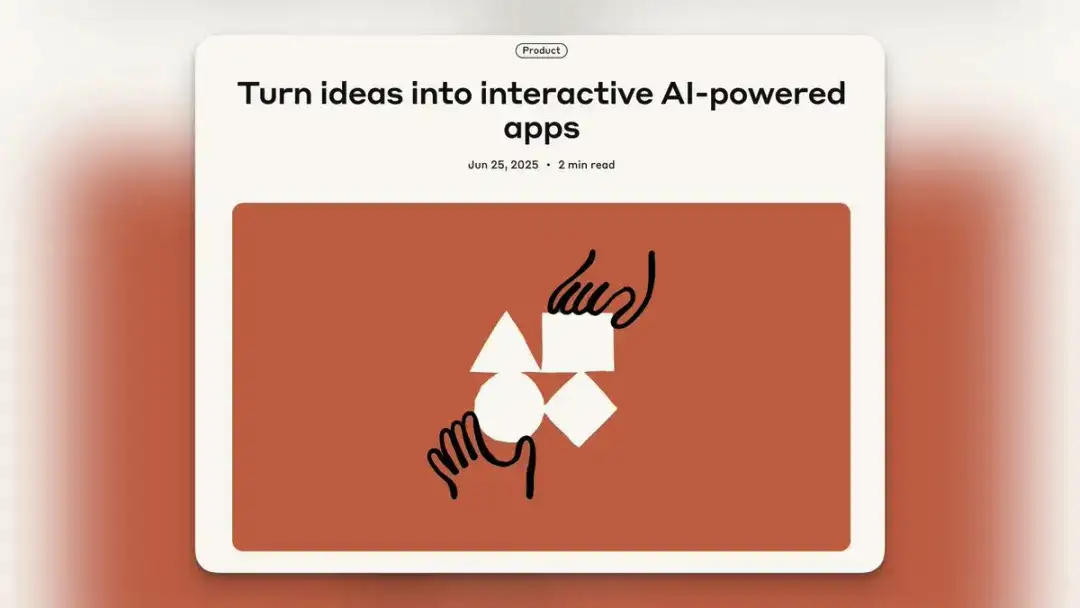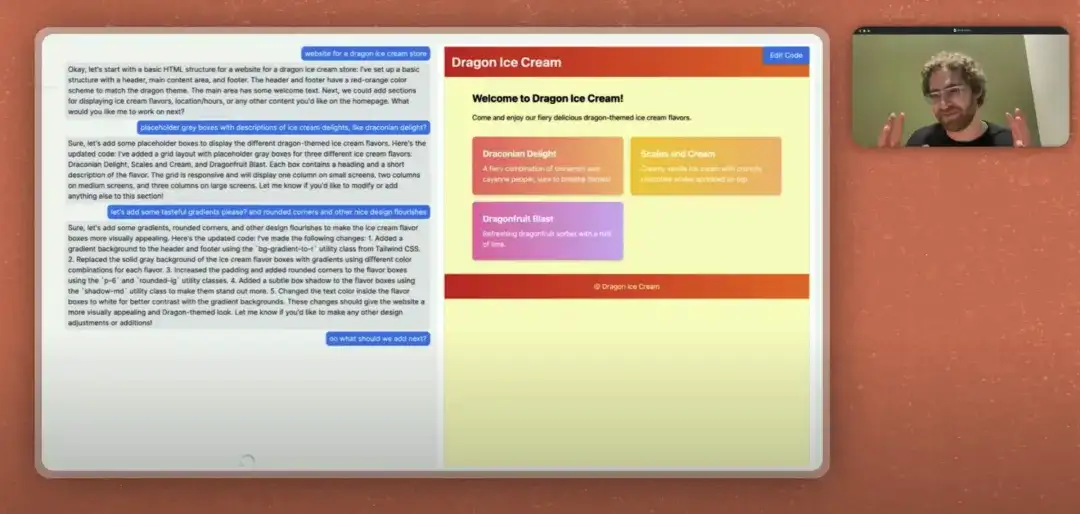Claude Artifacts 2.0 Makes App Building Simple
.webp)
Eric Walker · 12, July 2025
Anthropic’s Claude has been a chatterbox, a co-writer, and—increasingly—a coding companion. With this week’s major upgrade to its Artifacts feature, the San Francisco company is betting that Claude can also be the simplest way for anyone, coder or not, to spin up fully interactive software in minutes.

The release turns Artifacts from a pleasant curiosity—generated code tucked away in a sidebar—into a self-contained workspace where those snippets instantly compile, run, and can be shared with a link. In effect, Claude has crossed the line from “answer engine” to do-it-for-me development platform, a move that sets up a very different contest with OpenAI, Google, and the rising herd of low-code tools.
Free Claude available on GlobalGPT, an all-in-one AI platform.
A 2 A.M. Hack That Snowballed
Artifacts was born almost by accident. One night last March, an Anthropic engineer was testing how well Claude could write simple HTML sites. The usual routine—copy code, paste into an editor, hit save, refresh the browser—felt painfully slow. So he whipped up a rough split-screen interface that rendered Claude’s output on the spot.
By 2 A.M. the prototype was good enough to post in the company Slack. Colleagues immediately piled on with ideas, and within a week and a half the tool was in internal dog-food. The insight wasn’t just that Claude could write code; it was how different it feels when you can see, click, and tweak that code in real time—an experience the team describes as “editing alongside a super-fast collaborator rather than lobbing prompts over a wall.”
Since its public debut last August, users have produced more than 500 million Artifacts ranging from spreadsheets that audit household energy use to choose-your-own-adventure games for middle-school classrooms. The new release aims to make that sort of tinkering the rule, not the exception.

What’s New in the June 26 Upgrade
Dedicated workspace. A new “Artifacts” tab now lives in Claude’s sidebar. Open it and you’ll see every project you’ve made, neatly grouped, plus a gallery of templates the community is already remixing.
One-click sharing. Each Artifact has a public link that anyone with a free Claude account can open—even if they never touch the paid API.
Mobile parity. On iOS and Android you can view, interact with, and lightly customize Artifacts. Full editing still works best on desktop, but the phone experience is surprisingly capable for quick tweaks.
From static answers to living tools. Anthropic loves the flash-card example: you could ask Claude, “Make me 50 Japanese vocabulary cards for the JLPT N2 test,” or you could ask, “Build me a flash-card app that can generate cards for any exam topic.” The second request yields something reusable and shareable—a tiny SaaS built on demand.
All your code in one place. Instead of scrolling through chat history hunting for a particular CSS block, every version lives in the Artifact file tree. Ask Claude to “swap the color palette to pastel” and the diff shows up instantly.
Early Reactions: A Deck-Builder, a Prompt Toolbox, and More
Developers who tried the preview describe the workflow as “pair-programming on fast-forward.” Tech podcasters Fraser and Nael devoted a recent HallwayChat episode to Artifacts, arguing that it does what OpenAI’s GPT Store promised but never quite delivered: a frictionless way to turn a one-off prompt into a product.
Fraser put it to the test during summer break, helping his kids design a card-building game. Claude generated game art, balanced stats, and—via Artifacts—spit out a snappy UI that lets players tick boxes like “Scientist” or “Engineer” and auto-fills Midjourney prompts behind the scenes. What once required copying rows of prompt text from Google Sheets now happens with a single click.
On YouTube, an eight-minute walkthrough calls Artifacts “Zapier without the clutter.” The host imagines a near future where you ask, “Give me a dashboard of last week’s e-commerce sales, filterable by city, and let me email any segment,” and Claude stitches together the front-end, the database calls, and the SendGrid integration while you sip coffee.
X (formerly Twitter) has lit up with screenshots that look half IDE, half co-pilot. One user joked that it feels like “vibe-based coding”—you describe the atmosphere, and the code appears.
From Copy-Paste to Click-Run
Traditional AI chat flows are stuck in Q&A land: you ask, it answers, you paste the answer someplace useful. Anthropic’s upgrade erases that hop. Your browser is the IDE, and the app boots the moment the code exists. That subtle shift has big implications:
- Speed. Shortening the loop fuels experimentation. Want to tweak the physics in a Claude-generated mini-game? Tell it “gravity needs to feel moon-like” and playtest seconds later.
- Shareability. Because every Artifact is a link, community remixing feels less like code-forking and more like sending a Google Doc.
- Business model. Rather than charge per Artifact, Anthropic lets even free-tier users publish unlimited projects. The wager: once people taste instant creation, some will pay $20 (Pro) or $25–30 (Team) a month for higher limits and Claude’s largest context window.
Where OpenAI’s Canvas (released last October) offers a split view for editing AI-generated text, it stops short of shipping runnable software. Artifacts pushes past that line, blurring AI chat, low-code builder, and micro-SaaS storefront into one pane.
Free ChatGPT available on GlobalGPT, an all-in-one AI platform.
The Rise of On-Demand Software
For decades, UX designers have tried to anticipate every feature a customer might need, producing ever-thicker menus and onboarding tutorials. SaaS bloat was the price of universality.
Prompt-Native Interfaces Flip the UX Script
When the interface is language itself, the “surface area” of the product can be minimal—sometimes just a single text box. Features emerge when you ask for them and vanish when you don’t. The YouTube reviewer argued that tools like Artifacts herald a world where “software appears the moment it’s needed, perfectly tailored to a unique workflow, then dissolves.”
Analysts largely agree. Gartner predicts that by next year 70 percent of all new applications will be built with low-code or no-code technologies, up from less than 25 percent in 2020. The research firm also finds 41 percent of enterprises already run active ‘citizen-developer’ programs, empowering staff outside IT to ship internal apps. Artifacts weaponizes that trend: the citizen developer now has a senior AI pair-programmer on call 24/7.
Developers, Don’t Panic—Yet
Does this mean professional programmers are obsolete? Not quite. Anthropic positions Artifacts as a rapid-prototyping engine, fantastic for dashboards, games, and data toys—but it won’t magically harden your compliance controls or scale a transactional backend to millions of users overnight.
Security, governance, and architectural fit still matter. As more shadow apps pop up outside IT, companies will lean on seasoned engineers to audit, containerize, and integrate those experiments into production stacks. In other words, the hottest dev jobs may shift from “write every line” to “guide, review, and fortify what the AI and business teams spin up.”
The upshot is a two-track ecosystem: on-demand micro-apps for immediate needs, and deeply engineered systems for core business logic. Market forecasts bear this out. While low-code platform revenue is set to explode, traditional custom development continues to grow in parallel, driven by projects AI tools can’t yet handle—high-frequency trading, real-time 3-D rendering, mission-critical infra.
Where This Leaves the Rest of Us
Millions of people will try Claude’s upgraded Artifacts this summer because it costs nothing to start and feels, frankly, fun. Some of those experiments will remain personal scratch-pads; others will evolve into tools coworkers depend on daily. A few may snowball into full-blown startups.
The deeper shift is cognitive. When software is no longer something we install but something we describe, the skill that matters most may be the ability to converse precisely—knowing how to nudge an AI, debug its blind spots, and iterate toward a vision. Anthropic likes to say that “in the AI era, the strongest code might just be a carefully crafted conversation.”
Artifacts 2.0 makes that conversation visible—and clickable. Whether you’re a seasoned engineer racing through prototypes or an ambitious novice who’s never opened VS Code, Claude now invites you to build, share, and remix software at the speed of thought. The next great app may not come from a dev shop at all, but from someone who types, “Claude, I have an idea…”
Relevant Resources
